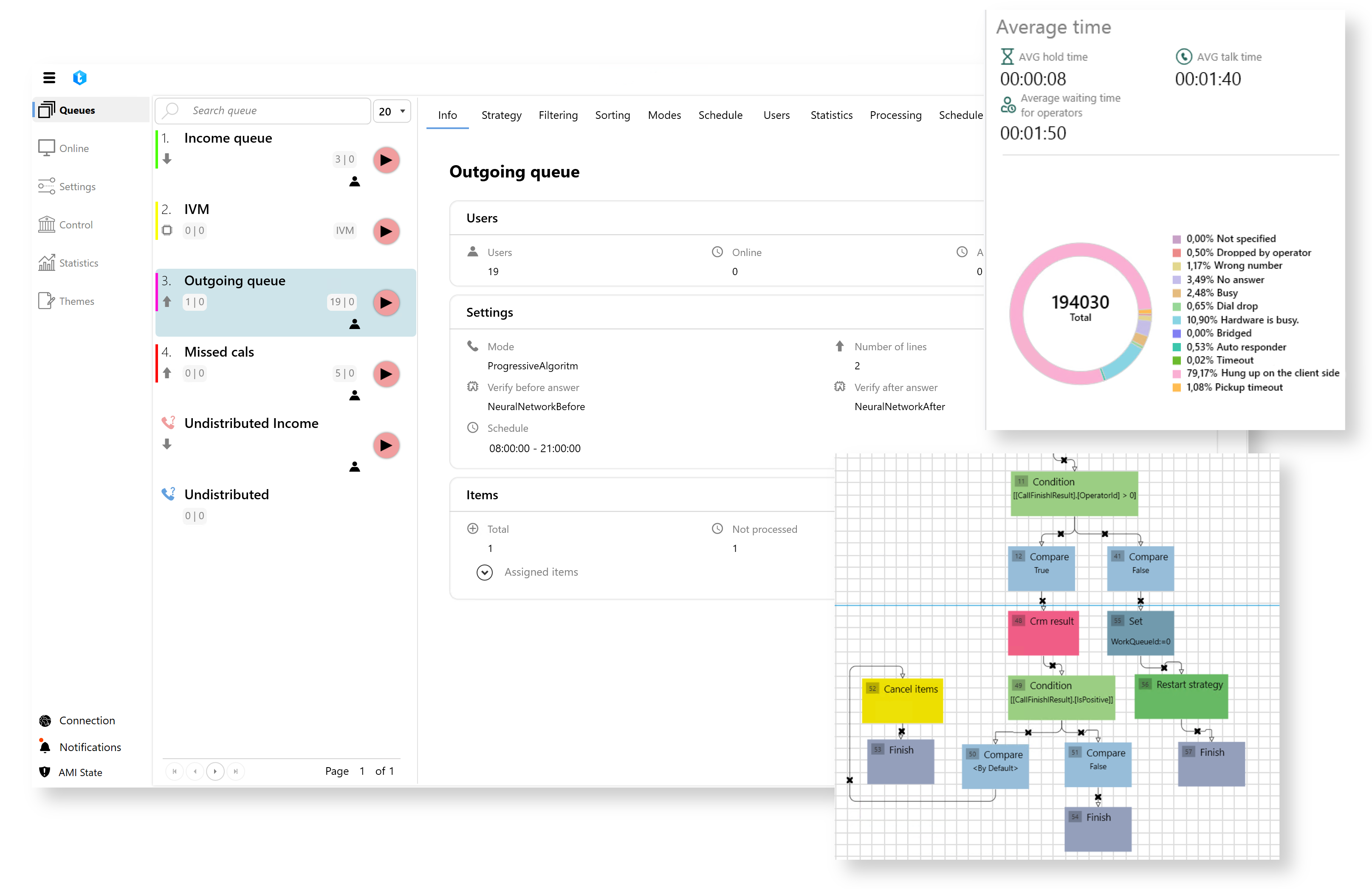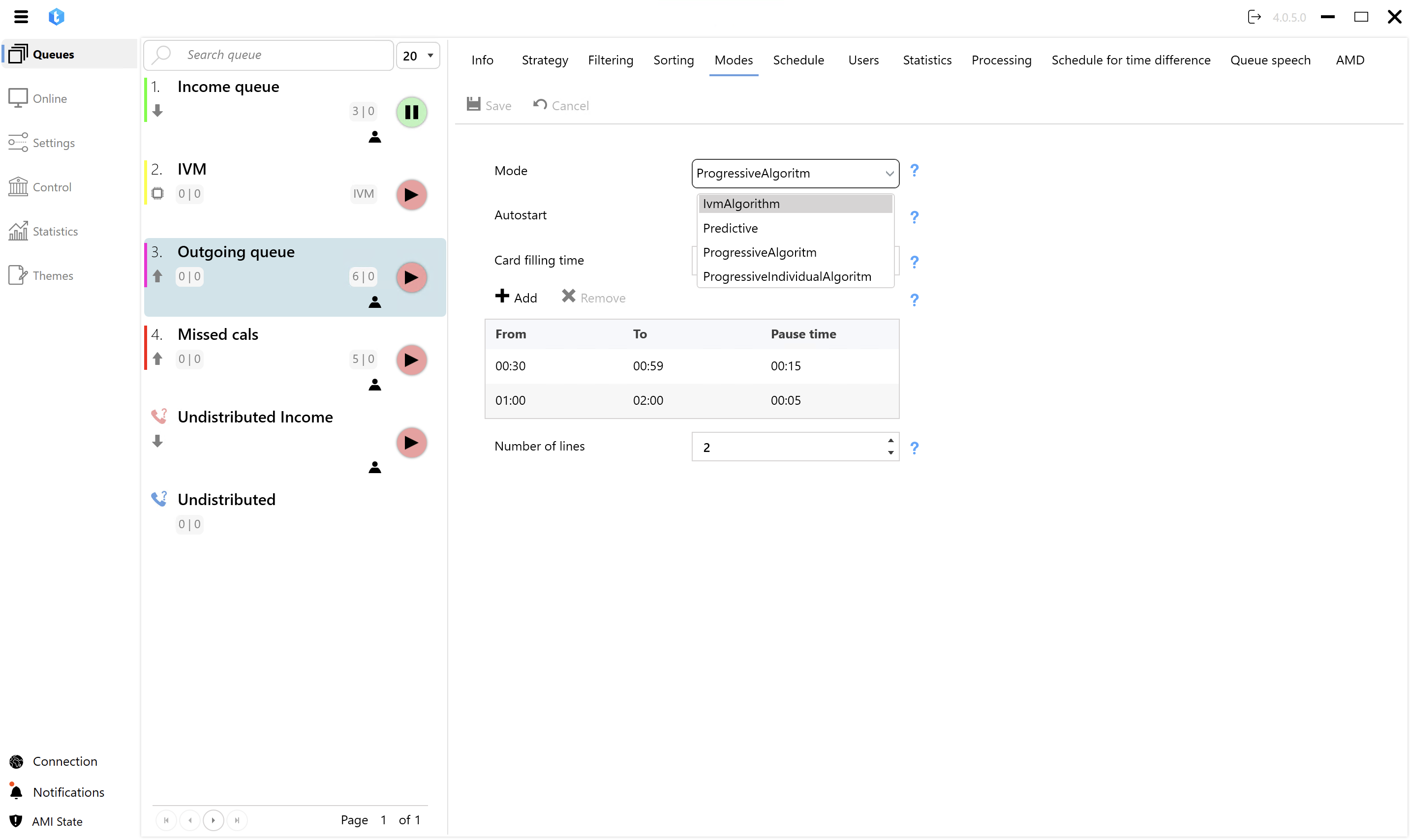
DELTA TEL
A professional software solution that incorporates the best innovative practices for solving contact centre tasks.
ABOUT DELTA TEL
A communication platform for automating contact centres of large and medium-sized businesses, which can easily implement omnichannel service in all necessary communication channels: calls, chats, websites and email.
It is a technology solution that allows you to create customised settings and strategies depending on the tasks of the contact centre and business goals. It helps to exercise comprehensive control and increase productivity.
A system that provides integration into business processes, end-to-end service quality control and optimisation of customer service costs.
It is a technology solution that allows you to create customised settings and strategies depending on the tasks of the contact centre and business goals. It helps to exercise comprehensive control and increase productivity.
A system that provides integration into business processes, end-to-end service quality control and optimisation of customer service costs.

Advantages

Omnichannel

Customization

Integration into existing business processes of the company

Asynchronous communication with external resources

Graphic script editor with universal components

Parallel work on several projects in one system

Total control of all processes, employees and lines

Flexible reporting system












Business tasks
Business tasks
OPPORTUNITIES
Outgoing queue

Outbound queues can be filled with telephone elements either automatically by importing via the API and RebbitMQ or manually by uploading CSV files.
For outbound queues, the system allows you to create custom call routing strategies in accordance with the required call logic. According to the configured strategy, the system executes various scenarios for working with telephone elements, for example, how long to wait for an answer when dialing a customer, through which trunks to make calls, or what to do if the call is unsuccessful. If the operator records a positive contact result in CRM, the telephony system can cancel the call and remove all associated telephone elements from dialing. If the call was unsuccessful, the callback logic is configured. Depending on the reason for the call termination, it is possible to set the time interval between subsequent calls and the required number of dialling within a working day.
The following contact processing modes are available for outgoing queues:
IvmAlgorithm — is a mode that allows you to process contacts without the operator's participation. To build an IVM, you can use both text scripts and audio tracks with the necessary variables, for example, the customer's name or any other data.
The system automatically executes IVM calls and, depending on the result, decides what to do next. In this mode, integration with Yandex and Google services is available.
ProgressiveAlgorithm — is a mode that allows the administrator to manually set the load by the number of simultaneous calls per agent and flexibly respond to changes in the contactability of the queue.
ProgressiveIndividualAlgorithm — if you assign your customers to your employees in the CRM system, then in this mode the system will call only within the assignment. For example, one queue can contain cases that are assigned to ten employees, and accordingly, the system will work on cases for each employee individually.
Predictive — is an automatic mode in which the system independently calculates the number of calls to be made per operator. The calculation takes into account the following parameters: current queue contact, average operator talk time, average time to fill out a card, and statistics on the average time to pick up the phone. Using these parameters, the system determines the number of subscribers to dial per available agent to obtain the best contact rate.
For outbound queues, the system allows you to create custom call routing strategies in accordance with the required call logic. According to the configured strategy, the system executes various scenarios for working with telephone elements, for example, how long to wait for an answer when dialing a customer, through which trunks to make calls, or what to do if the call is unsuccessful. If the operator records a positive contact result in CRM, the telephony system can cancel the call and remove all associated telephone elements from dialing. If the call was unsuccessful, the callback logic is configured. Depending on the reason for the call termination, it is possible to set the time interval between subsequent calls and the required number of dialling within a working day.
The following contact processing modes are available for outgoing queues:
IvmAlgorithm — is a mode that allows you to process contacts without the operator's participation. To build an IVM, you can use both text scripts and audio tracks with the necessary variables, for example, the customer's name or any other data.
The system automatically executes IVM calls and, depending on the result, decides what to do next. In this mode, integration with Yandex and Google services is available.
ProgressiveAlgorithm — is a mode that allows the administrator to manually set the load by the number of simultaneous calls per agent and flexibly respond to changes in the contactability of the queue.
ProgressiveIndividualAlgorithm — if you assign your customers to your employees in the CRM system, then in this mode the system will call only within the assignment. For example, one queue can contain cases that are assigned to ten employees, and accordingly, the system will work on cases for each employee individually.
Predictive — is an automatic mode in which the system independently calculates the number of calls to be made per operator. The calculation takes into account the following parameters: current queue contact, average operator talk time, average time to fill out a card, and statistics on the average time to pick up the phone. Using these parameters, the system determines the number of subscribers to dial per available agent to obtain the best contact rate.
SUPPORT
24/7
365
Online
support
support
hours
2,2
The average time to solve a problem
that came to the support service
that came to the support service
minutes
29
Average response time
to a request
to a request
SUPPORT
- Guaranteed response time to your requests (from 1 to 12 hours depending on the level of criticality)
- scheduled system updates (1 time per quarter)
- development hours
- hours of consultations and settings


